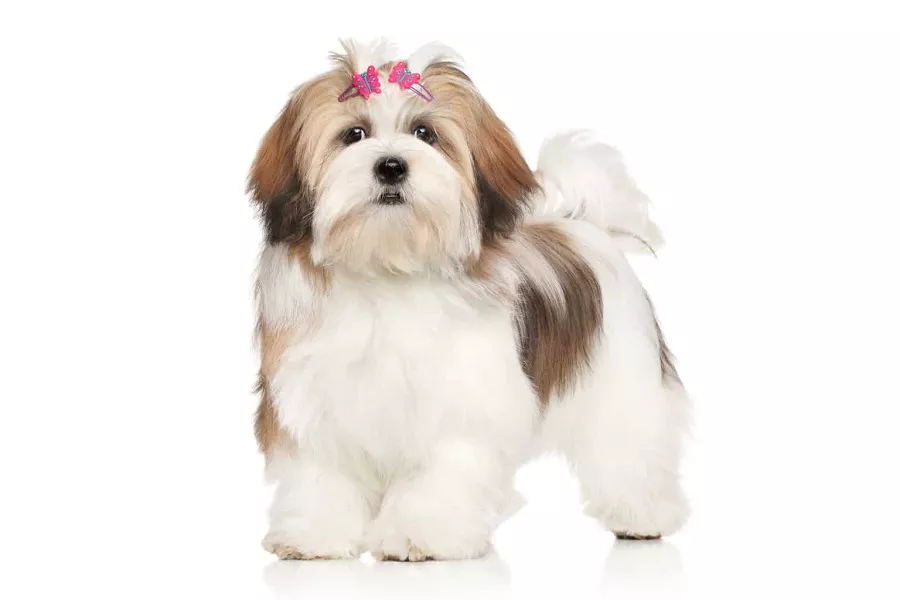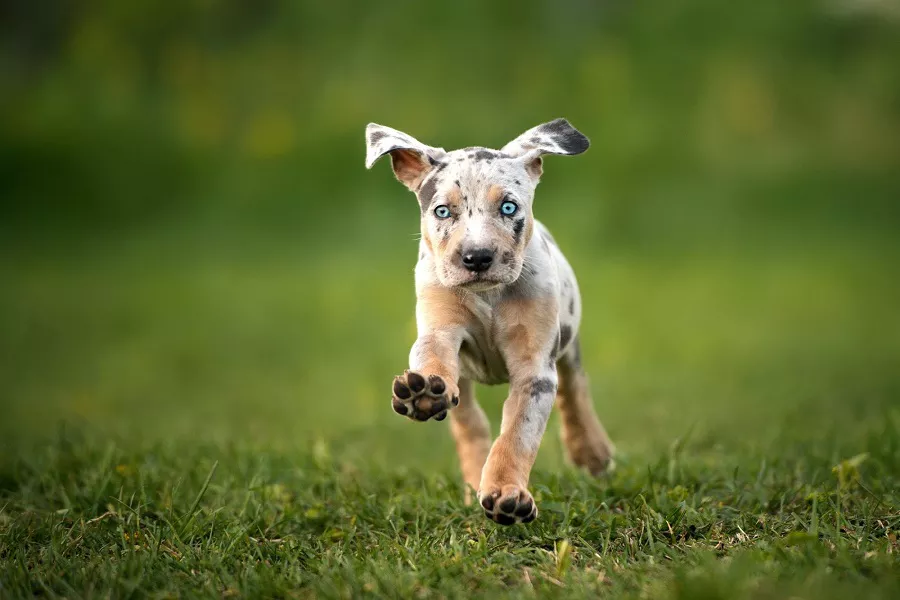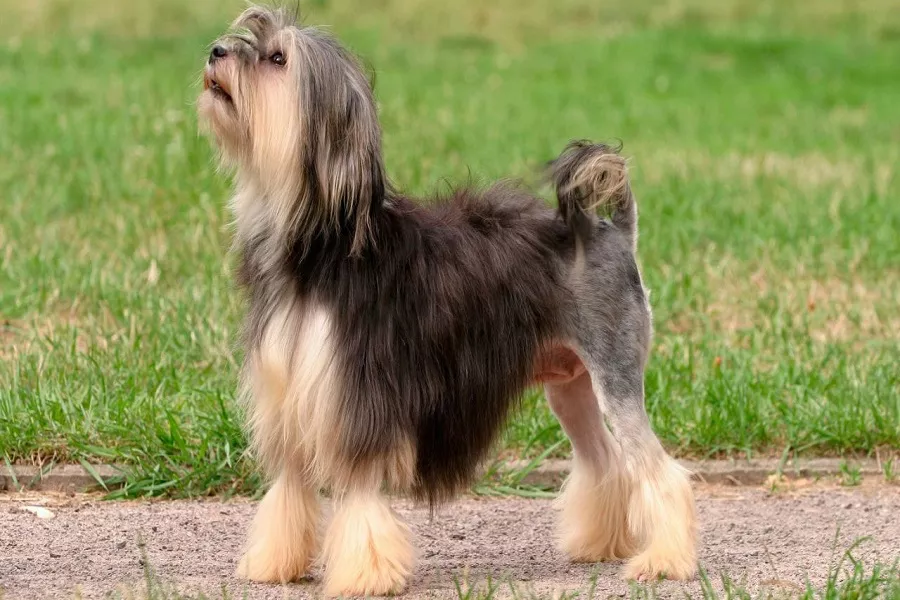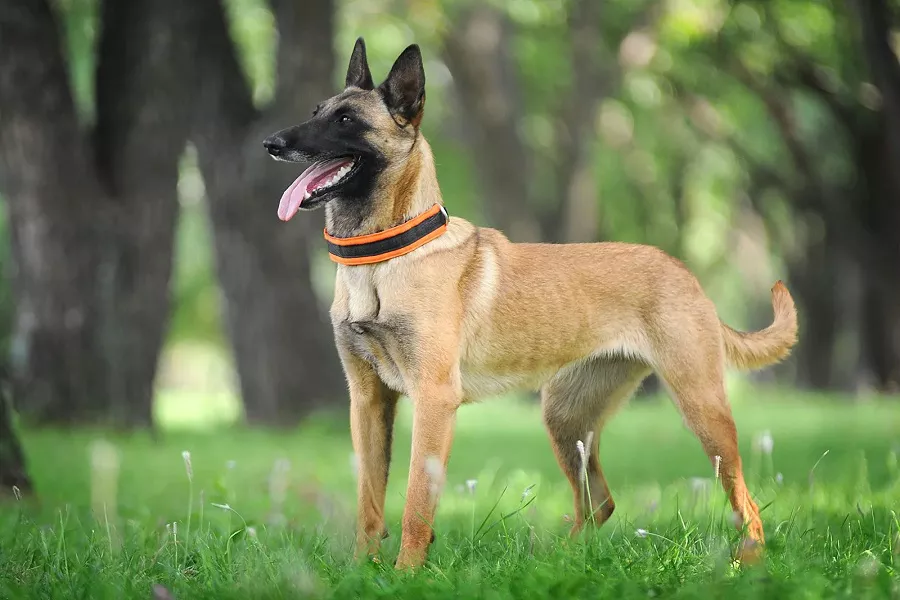What is lhasa apso?
Lhasa apso, also known as Lhasa lion dog, Tibetan lion dog, etc., is a small companion dog native to the Qinghai-Tibet Plateau. The most developed, can be towed to the ground. The coat color is golden, cinnabar, black, white, gray, tea and other colors. Tail upturned, chrysanthemum-shaped.
The lhasa apso is generally 6-7 kg in weight and 25-28 cm in height. Although it is not large in size and not ferocious in temperament, it has a strong body and excellent tolerance to harsh conditions. Therefore, it has always been the guard dog of the Dalai Lama in Tibet.
What does lhasa apso look like?
The key point of its identification is that it looks like a lion, and its coat is long and rich, especially the head, ears, and tail are the most abundant, which can be dragged to the ground. Has a lot of beard and a long face mane.
Temperament: Cheerful and confident, but very cautious with strangers, very wary, loyal to their masters, and likes to bark. Makes a good guard dog.
Size: Sizes vary, but males are about 10-11 inches tall at the shoulder; females are slightly smaller.
HEAD: Heavily feathered, falling in front of the eyes, with a large beard and moustache; the skull is narrow, conspicuously sunken behind the eyes, not very flat, but neither arched or apple-shaped. The straight front face has sufficient length. The nose is black and the distance from the nose to the eyes is approximately 1/3 of the distance from the nose to the back of the head.
Eyes: Dark brown, neither too large and full nor too small and sunken.
Ears: Pendulous and richly feathered.
Mouth and muzzle: The preferred bite is a pincer bite or a slight underjaw bite. The muzzle is of moderate length; a square muzzle is objectionable.
Body Shape: The distance from the shoulder joint to the rump is slightly greater than the height at the withers, the ribs are well supported, the loin is strong, the hindquarters and thighs are well developed.
Legs: The front legs are straight; the forelegs and hind legs are profusely covered with hair.
Feet: Many feathered, round, cat-like, with thick pads.
Tail: Profusely feathered, coiled in a spiral behind the back, possibly tangled at the end. A low tail is a serious defect.
Coat: Heavy, straight, stiff, not woolly or silky, of sufficient length, and very bushy.
Color: Any color is acceptable, golden yellow is ideal. Ears and whiskers with or without dark tips.
lhasa apso living habits
Tough, brave, likes to bark, has strong discrimination ability and vigilance against strangers, is good at guarding doors, and is an excellent guard dog. Because of their small size, the Lhasa Apso is suitable for family breeding and can be a good companion dog.
lhasa apso rearing
Most adult dogs over 12 months old can be fed once a day, and lhasa apso can be fed twice a day. Overfeeding, the dog will vomit and diarrhoea. Generally, dogs will obey the family’s daily routine and eat at the family meal time. This can prevent the dog from coming to ask for food during the meal. Some dogs need to get up to defecate in the middle of the night after eating at night. The dog can eat earlier or the food can be divided into two parts, and the two-meal feeding method can be adopted. Dogs like to eat in a fixed place, so it can strengthen their daily routine and the meal time should not be too long. The feeding area for dogs can be based on personal preference. Dogs generally eat their food cleanly. The eating area should also be convenient for dogs to finish their food. Occasionally, some dogs will bite the meat out of the food tray, put it on the floor and bite it with their feet. Dogs with such eating habits can lay newspapers on the floor to facilitate cleaning after meals. For those growing puppies, do not leave leftovers on the floor for too long.
Reminder: For more knowledge about dog feeding, dog training, dog grooming, dog breeding, please pay attention to: mtedr.com, providing you with different kinds of dogs.


























